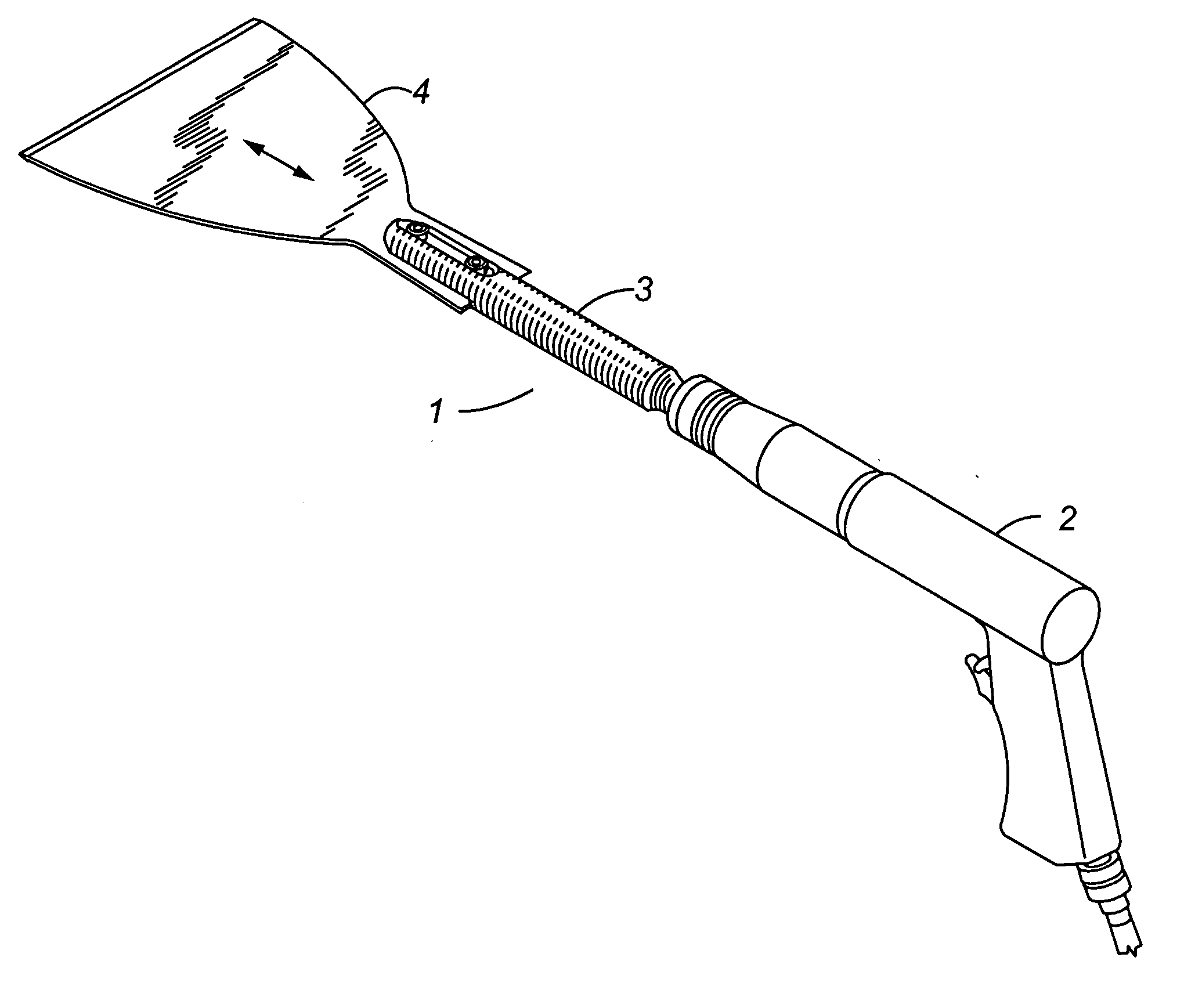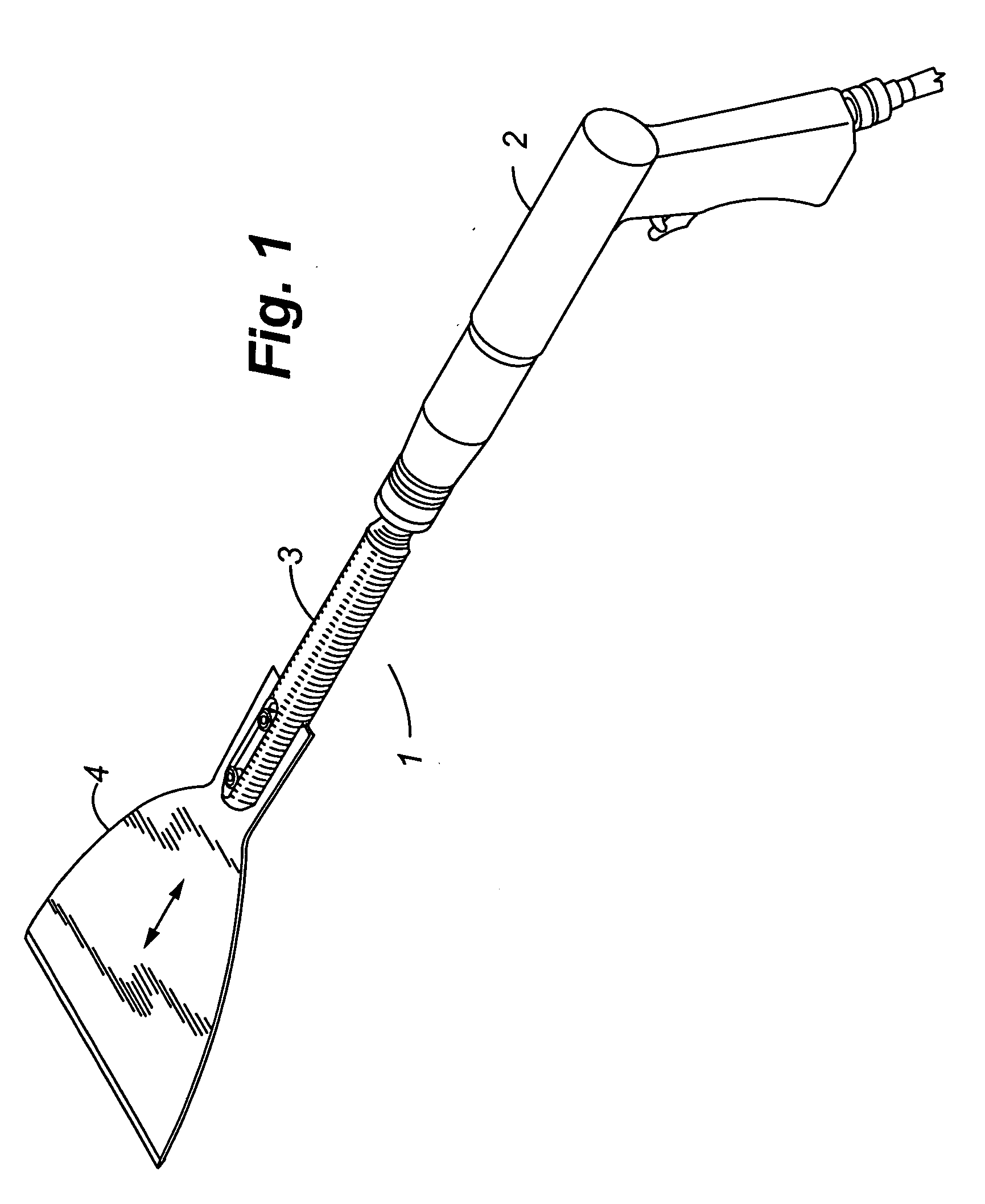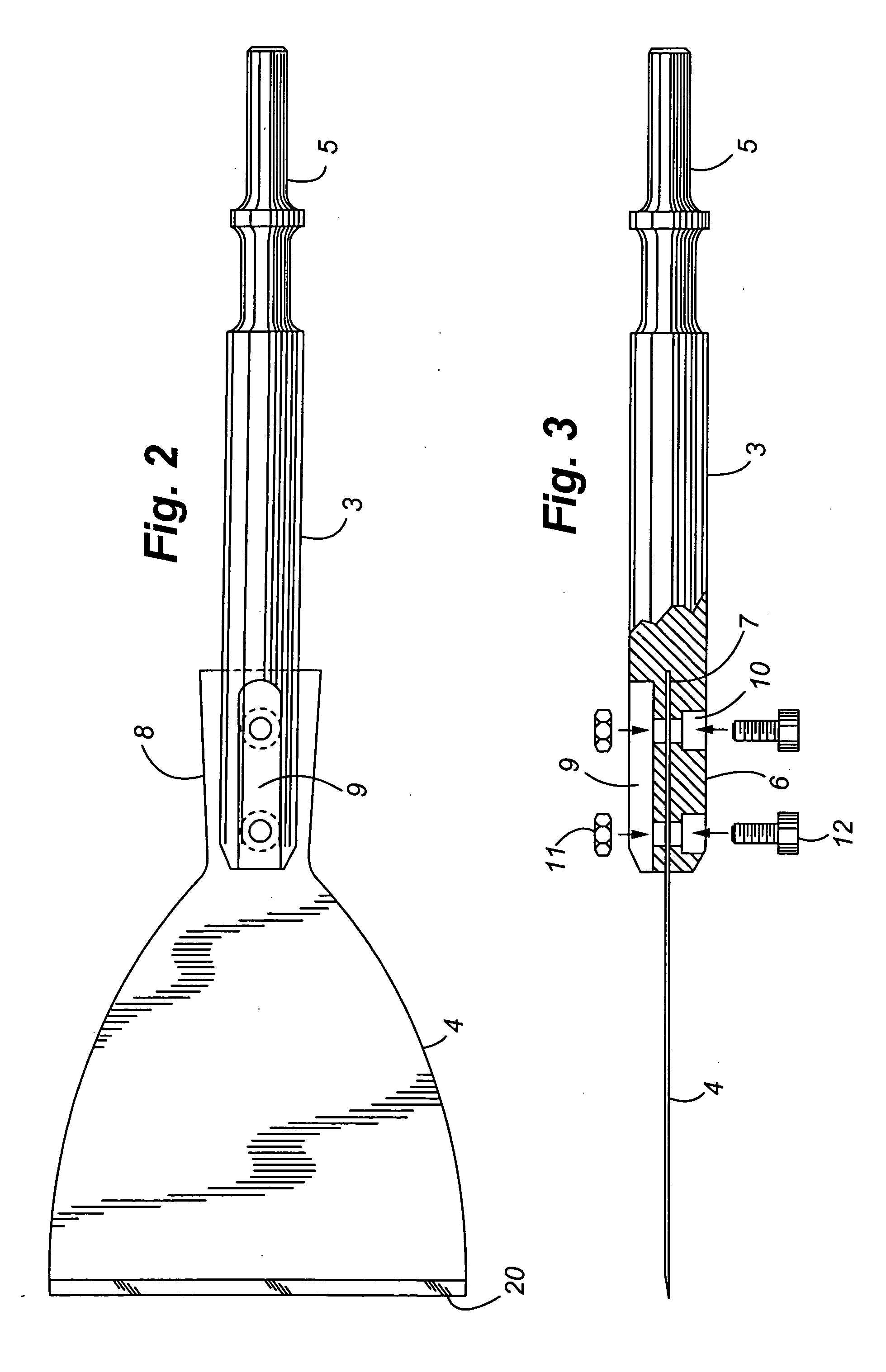Cutting assembly for removing a windshield and method relating to same
a technology of windshield and cutting assembly, which is applied in the direction of bird housing, portable percussive tools, cleaning of hollow objects, etc., can solve the problems of difficult cutting with tools, difficult to penetrate, and difficult to remove, and achieve the effect of sufficient lateral flexibility and rigidity
- Summary
- Abstract
- Description
- Claims
- Application Information
AI Technical Summary
Benefits of technology
Problems solved by technology
Method used
Image
Examples
Embodiment Construction
[0039] The cutting assembly 1 comprises a reciprocating air gun 2 and a cutting tool comprised of a shaft 3 and blade 4.
[0040] The air gun 2 is commercially available. An Ingersoll Rand Pneumatic model #117 or a Chicago Pneumatic model # CP715 gun is suitable. These guns can deliver high impact strokes to advance the blade 4 through the urethane bed 24. The shaft 3 is a {fraction (3 / 4)} inch diameter steel rod having an inner end 5 conventionally shaped to connect with the air gun 2. At its outer end 6, a slot 7 extends inwardly to receive the shank 8 of the blade 4. The upper surface of the rod end 6 forms a recess 9. The rod end 6 further forms bolt holes 10 extending transversely therethrough. Nuts 11 and bolts 12 are received in the recess 9 and holes 10 to secure the blade shank 8 to the rod end 6.
[0041] The blade 4 is substantially bell-shaped, is formed of stainless steel, has a width at the front edge 20 of about 4 inches, a length of 6 inches and a thickness of 0.05 inche...
PUM
| Property | Measurement | Unit |
|---|---|---|
| width | aaaaa | aaaaa |
| width | aaaaa | aaaaa |
| length | aaaaa | aaaaa |
Abstract
Description
Claims
Application Information
 Login to View More
Login to View More - R&D
- Intellectual Property
- Life Sciences
- Materials
- Tech Scout
- Unparalleled Data Quality
- Higher Quality Content
- 60% Fewer Hallucinations
Browse by: Latest US Patents, China's latest patents, Technical Efficacy Thesaurus, Application Domain, Technology Topic, Popular Technical Reports.
© 2025 PatSnap. All rights reserved.Legal|Privacy policy|Modern Slavery Act Transparency Statement|Sitemap|About US| Contact US: help@patsnap.com



